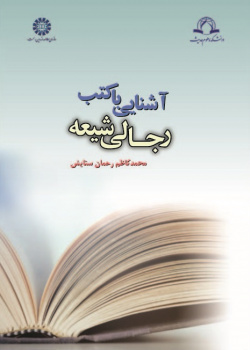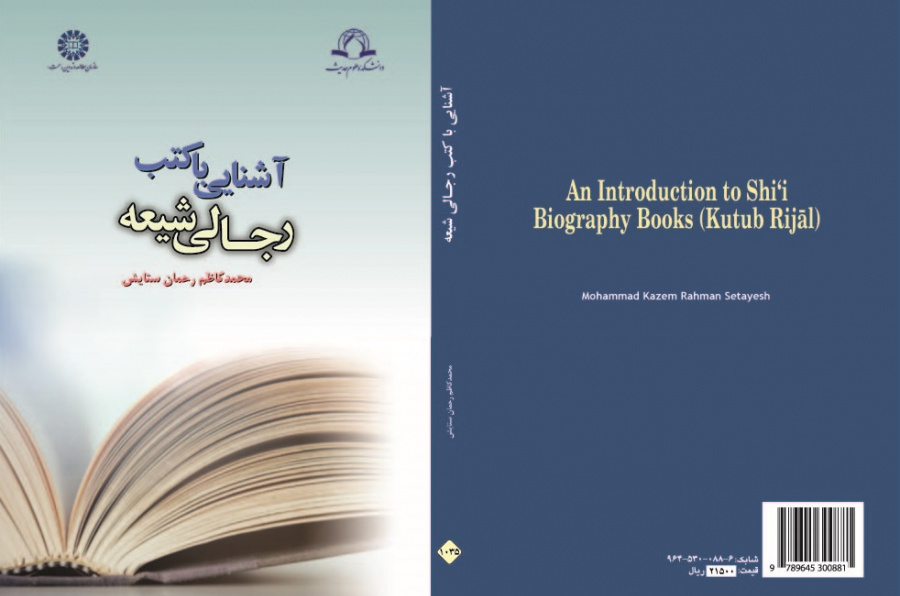

An Introduction to Shi’i Biography Books (Kutub Rijāl)
On the one hand, the Sunnah, being credible, has been a basis from which juridical principles were extracted and on the other hand it was appointed the status of a correct model of life for individuals and the society. What has remained of the attitudes and behavior of the Inerrants is reflected in the Hadiths and therefore at the period of the absence of the Inerrants, the onlym reliable source of access to their sayings is the Hadiths. But by passage of time and the infiltration of wrong and fake Hadiths, because of human fallacies or falsifying the collection of quotations and the resources of Hadiths, the Narrators of the Hadiths started on a mission to devise ways of accessing the true ones. The most widely practiced method in ascertaining the truth of the Hadiths has been documentation and inquiry from the Narrators of the Hadiths, supported by rational credibility, so that a piece of Hadith was only accepted by mentioning the chain of its narrators. By the process of putting emphasis on documentation, attention was drawn to the Narrators of the Hadiths and the necessity to know them became an imperative.
In the age of the Companions of the Imams, this knowledge was possible to be attained by direct or mediated ways of knowing the Narrator. This kind of knowledge is true and real. After this period testimony and evidence became the ground on which the Narrators were accepted. In the fourth and fifth centuries all the information about the Rijal was gathered in some books, and from that time the only way to know these Narrators has been reference to these documents.
At the present age also, because the most frequent way of gaining knowledge of these Narrators has been books and scripted materials, therefore being acquainted with the Rijal Sources, their styles and the information included in each text plays an important role in recognizing the narrators.
After a short introduction emphasizing the importance of familiarity about Rijal books, various compositions of the Rijals and a history of the authorship of the Shi’ah Rijal, the book discusses the following topics in four chapters: in the first chapter titled “The Primary Principles of Rijal” the subjects bellow are addressed: Introduction to the Barqi Rijal, Ibn Ghazairi Rijal, Introduction to Freedom in Knowledge of the Rijal , Introduction to “The Rijal Book” by Shiek Tusi, Introduction to the Book Alfihrest by Sheik Tusi, and Introduction to “The Rijal Book” by Al-Najashi. The second chapter deals with “Secondary Principles”. In this chapter there is an introduction to “Khulasatal Aghwal” and to “The Rijal Book” by Ibn Davood. In the third chapter “Rijal Societies” methods of compiling Rijal Societies, Introduction to Monhij Almaghal fi Tahghig Ahwal al-Rijal (the great Rijal); critique of the Rijal; Introduction to Jamieh Al- Rawat; Tanghih Al-Maghal fi Ilm Al-Rijal; Introduction to the Ways of the Rijal; and Introduction to non-Arabic Rijal are put forward. The fourth chapter is dedicated to “An Introduction to the Research Books on Rijal”. In this chapter the subsequent topics are discussed: benefits of scripts, documenting principles and monographs. In this book the chapters are arranged topically. Each important Rijal source is dealt with in one separate chapter.
There are suggested research questions, software sources on Shi’ah Rijal, and the sources are listed at the back of the book. After the introduction of each chapter, some questions and a part for further reading are inserted.
Compiled for the students of theology as a textbook for a course in “The Rijal Books of the Shi'ah”, this book presents a short introduction emphasizing the importance of familiarity about Rijal books.
Selected Book of the 16th Best Academic Book, 2007





